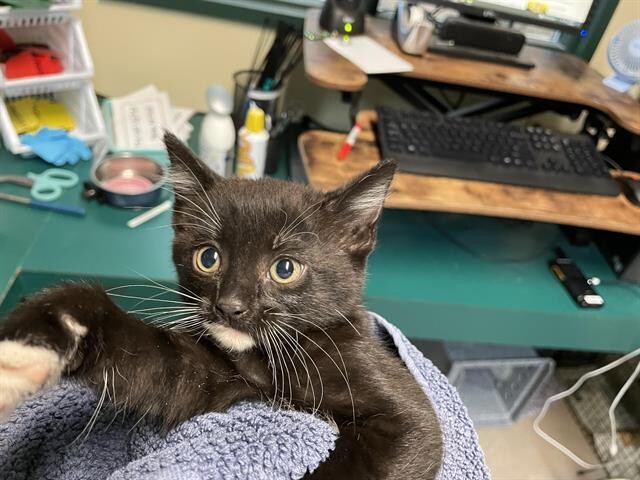
Harmful bacteria and fungi living in your mouth could triple your risk of developing pancreatic cancer, a study has suggested.
Experts have long believed that people with poor oral hygiene are more vulnerable to a host of diseases—including cancer—than those with healthier mouths.
But now scientists from NYU School of Medicine, have discovered which bacteria could increase the risk, theorising that the harmful bugs originating in the mouth can be carried by saliva into the pancreas.
Writing in the journal JAMA Oncology, Dr Richard Hayes, expert in population health and study co-author, said: ‘It is clearer than ever that brushing and flossing your teeth may not only help prevent periodontal disease but may also protect against cancer.’
The oral microbiome—the community of bacteria and fungi that live in the mouth—is increasingly being studied for its potential role in disease.
In the current study, researchers found for the first time that a type of yeast called candida—which naturally lives on the skin and throughout the body—may play a role in pancreatic cancer.
In the largest study of its kind, researchers examined data from two ongoing investigations tracking 900 American participants to better understand how lifestyle factors, such as smoking, and medical history are involved in cancer development.
At the beginning of the study, participants—from the American Cancer Society Cancer Prevention Study II and the Prostate, Lung Colorectal and Ovarian Cancer Screening Trial—rinsed with mouthwash and provided saliva samples.

Yixuan Meng, PhD, study lead author, said: ‘Our findings provide new insight into the relationship between the oral microbiome and pancreatic cancer.’
Researchers then followed the participants for around nine years to record any presence of cancerous tumours.
The researchers then compared the bacterial and fungal DNA from saliva samples of 445 pancreatic cancer patients to that of another 445 randomly selected cancer-free participants.
After accounting for confounding factors known to increase the risk of the disease, such as smoking, age and race, the researchers identified 24 species of bacteria and fungi that either increased or slashed pancreatic cancer risk.
Another three bacteria linked to the cancer were already known to cause a nasty gum infection that can eat away at the jawbone and soft tissue surrounding the teeth, known as periodontal disease.
Altogether, the entire group of harmful microbes increased the risk of developing the cancer by more than threefold.
By assessing the makeup of each participant’s oral microbiome, the researchers were able to develop a tool that could estimate individual cancer risk.
Professor Jiyoung Ahn, study co-author, said: ‘By profiling bacterial and fungal populations in the mouth, oncologists may be able to flag those most in need of pancreatic cancer screening.’
However, the researchers emphasised that at this point, their findings cannot confirm a direct cause-and-effect link, but rather a correlation between cancer risk and certain microbes in the mouth.

Pancreatic cancer remains one of the least survivable forms of the disease and worryingly its on the rise. Source for data: Cancer Research UK
.
They now plan to explore whether oral viruses—like oral thrush—could contribute to cancer and how the mouth’s microbiome could affect a patient’s’ prognosis.
Pancreatic cancer—dubbed a ‘silent killer’ due to its subtle symptoms—kills just over 10,000 patients every year, about one death every hour.
And by 2040, cases are expected to hit record highs with 201,000 cases of the deadly cancer expected to be diagnosed.
Pancreatic cancer is typically caught at late stages, as warring signs are easily mistaken for other problems.
When spotted early, before it has spread throughout the body, around half of patients will survive at least a year.
But if the cancer has already spread beyond the organ—as happens for the majority of patients—only one in 10 patients will survive.
While pancreatic cancer is most likely to strike people over the age 75—younger groups can also get the disease.
Last year the Daily Mail highlighted a ‘frightening‘ explosion of young women developing the disease.
Rates of pancreatic cancer have soared by up to 200 per cent in women under the age of 25 since the 1990s.
Whilst numbers remain low, oncologists cannot explain the surge in young women, with no such spike noted in men of the same age.
Overall, incidences of the disease have increased by around 17 per cent in Britain over the same timespan, with soaring obesity rates and environmental factors suspected to be behind the trend.
Potential symptoms of pancreatic cancer include jaundice, where the whites of the eyes and skin turn a yellow hue, alongside itchy skin and darker urine.
Other possible signs include loss of appetite, unintended weight loss, constipation or bloating.
While these symptoms are unlikely to be cancer it is important that they are checked out by a GP early just in case, especially if people have had them for over four weeks.
The pancreas is a tadpole-shaped organ that forms part of the digestive system and also performs a crucial role in hormone regulation.
It is located just behind the stomach and is about 25cm in length.
In its digestive role, it helps produce enzymes that help the body break down food into the nutrients it needs.
Charity, Cancer Research UK, estimates 22 per cent of cases of the disease are caused by smoking, known to increase the likelihood of gum disease, and 12 per cent by obesity.
Mouth Microbes Linked to Pancreas Cancer Risk
— A microbial risk score could help identify people at greater risk

More than two dozen bacteria and fungi in the mouth may be linked to pancreatic cancer risk, according to an analysis of two large cohorts.
Analysis of oral-wash samples from over 120,000 people revealed three bacterial pathogens behind periodontal disease, 21 other bacterial species, and four fungi associated with the risk of pancreatic cancer, said Jiyoung Ahn, PhD, of New York University in New York City, and colleagues.
A microbial risk score (MRS) that combined 27 bacteria and fungi was linked to a 3.44-fold increase (95% CI 2.63-4.51) in cancer risk for every one standard deviation rise in the MRS, they noted in JAMA Oncologyopens in a new tab or window.
“This could serve as an important risk-stratification tool in healthy populations,” Ahn told MedPage Today. “If validated, oral microbiome profiling could serve as a noninvasive biomarker to identify individuals at elevated risk who might benefit from enhanced surveillance — which is especially important given the lack of effective early detection methods for pancreatic cancer.”
The findings strengthen earlier research that already connects periodontal disease, particularly Porphyromonas gingivalis infection, and clinical candidiasis with greater pancreatic cancer riskopens in a new tab or window.
“Our findings suggest that maintaining good oral hygiene — through regular brushing, flossing, and dental care — is critical,” Ahn added. “This is a modifiable factor for pancreatic cancer prevention.”
At least three periodontal disease pathogens were linked to greater pancreatic cancer risk, including Porphyromonas gingivalis (OR 1.27, 95% CI 1.03-1.57), Eubacterium nodatum (OR 1.42, 95% CI 1.14-1.76), and Parvimonas micra (OR 1.36, 95% CI 1.09-1.70). Also associated with greater risk were six Actinobacteria species, three Bacteroidetes species, three Firmicutes species, and one Fusobacterium species.
Increased presence of Candida, the most common fungal genus, was significantly linked with greater pancreatic cancer risk (1.58-fold, 95% CI 1.05-2.38), including Candida tropicalis (1.43-fold, 95% CI 1.00-2.03) and unspecified Candida (1.34-fold, 95% CI 1.05-1.70). Candida‘s link to pancreatic cancer was stronger in people with a history of tobacco use, but body mass index (BMI), alcohol use, and diabetes didn’t boost the association.
BMI, smoking history, alcohol use, or diabetes also had no substantial effect on the link between the MRS and pancreatic cancer.
Some oral bacteria and fungi were linked with reduced pancreatic cancer risk, including six periodontal disease pathogens and three Proteobacteria species, two Bacteroidetes species, and two Actinobacteria species. Oral fungi such as Candida albicans (0.77-fold, 95% CI 0.62-0.96) and Malassezia globosa (0.84-fold, 95% CI 0.73-0.98) were associated with lower risk of pancreatic cancer.
“Emerging evidence systematically links oral pathogens to pancreatic carcinogenesis, suggesting that poor oral health may be causally related to pancreatic cancer development,” Ahn and colleagues said.
Pathogens such as P. gingivalis have been found in pancreatic cancer, and some of the oral bacteria identified in the study are linked with carbohydrate and lipid metabolism dysfunction. When oral microbes migrate from the oral cavity to the pancreas, they may play a role in reshaping the pancreatic microbiome and promoting carcinogenesis.
Those oral visitors can then help keep cancer going. Their ongoing pancreatic presence can cause “dysbiosis that releases microbial toxins and metabolites, promoting pancreatic tumorigenesis by triggering an innate immune response and thereby affecting phagocytic potential and inflammatory processes,” Ahn and colleagues explained.
For the study, researchers collected oral wash samples from 70,000 people in the American Cancer Society’s Cancer Prevention Study-II Nutrition Cohort and 52,000 people in the Prostate, Lung, Colorectal, and Ovarian Cancer Screening Trial.
Of these, 445 people who developed pancreatic cancer over a median of 8.8 years were matched with 445 controls. Of those 890 people, 47% were female, 92% were white, and the average age was 67 years. Those with pancreatic cancer were more likely than controls to smoke, drink alcohol, or have a family history of pancreatic cancer. There were no significant differences between the two groups in the diversity of oral bacteria or overall microbiome composition.
Limitations included the study’s observational design, which could allow confounding by unmeasured factors. Incomplete microbiome reference databases may have limited findings of risk-raising fungi. Finally, the study population’s large percentage of white participants may limit the findings’ generalizability.




































:max_bytes(150000):strip_icc():focal(749x0:751x2)/Baby-found-alone-on-NYC-subway-platform-102025-39920c26cc6f4969bad33fc620a718db.jpg?w=1200&resize=1200,0&ssl=1)
:max_bytes(150000):strip_icc():focal(724x387:726x389)/baby-found-in-box-092625-1-9a6b600d86fc403f901a35c514738ffd.jpg?w=1200&resize=1200,0&ssl=1)
:max_bytes(150000):strip_icc():focal(774x396:776x398)/baby-found-toilet-cistern-111825-1-d9150426c69243f4a1778eb518589c20.jpg?w=1200&resize=1200,0&ssl=1)

:max_bytes(150000):strip_icc():focal(727x354:729x356)/Angelina-Jolie-Billy-Bob-Thornton-111825-86b23fdf767748bf816a9e1be59a0075.jpg?w=1200&resize=1200,0&ssl=1)